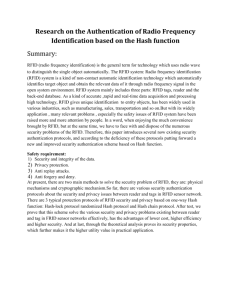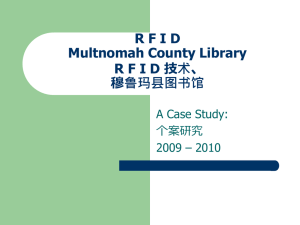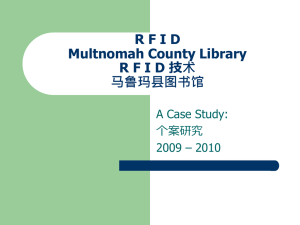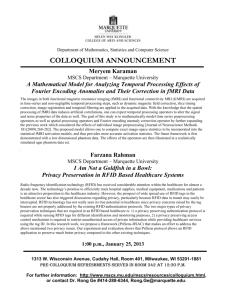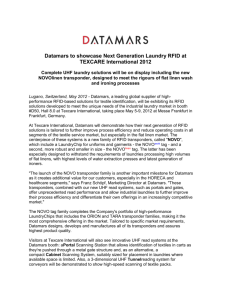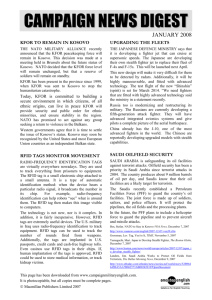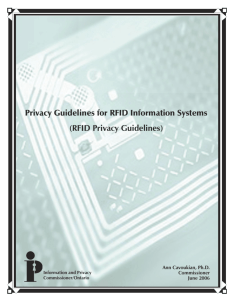Cryptanalysis of a New Ultralightweight RFID Authentication
advertisement
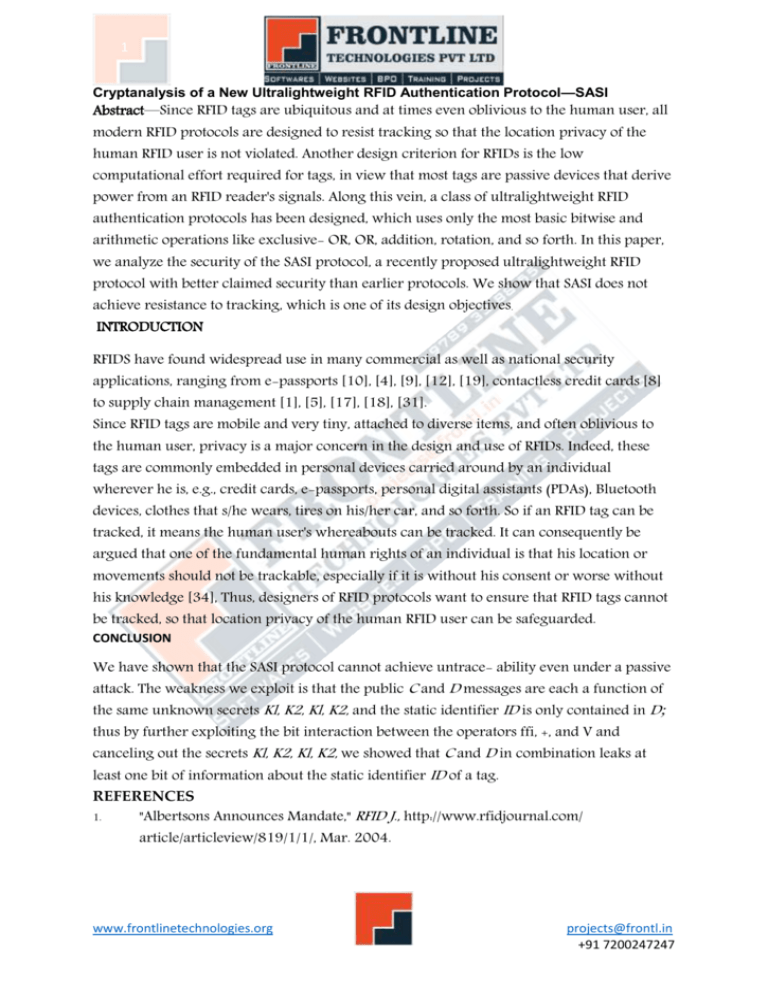
1 Cryptanalysis of a New Ultralightweight RFID Authentication Protocol—SASI Abstract—Since RFID tags are ubiquitous and at times even oblivious to the human user, all modern RFID protocols are designed to resist tracking so that the location privacy of the human RFID user is not violated. Another design criterion for RFIDs is the low computational effort required for tags, in view that most tags are passive devices that derive power from an RFID reader's signals. Along this vein, a class of ultralightweight RFID authentication protocols has been designed, which uses only the most basic bitwise and arithmetic operations like exclusive- OR, OR, addition, rotation, and so forth. In this paper, we analyze the security of the SASI protocol, a recently proposed ultralightweight RFID protocol with better claimed security than earlier protocols. We show that SASI does not achieve resistance to tracking, which is one of its design objectives. INTRODUCTION RFIDS have found widespread use in many commercial as well as national security applications, ranging from e-passports [10], [4], [9], [12], [19], contactless credit cards [8] to supply chain management [1], [5], [17], [18], [31]. Since RFID tags are mobile and very tiny, attached to diverse items, and often oblivious to the human user, privacy is a major concern in the design and use of RFIDs. Indeed, these tags are commonly embedded in personal devices carried around by an individual wherever he is, e.g., credit cards, e-passports, personal digital assistants (PDAs), Bluetooth devices, clothes that s/he wears, tires on his/her car, and so forth. So if an RFID tag can be tracked, it means the human user's whereabouts can be tracked. It can consequently be argued that one of the fundamental human rights of an individual is that his location or movements should not be trackable, especially if it is without his consent or worse without his knowledge [34], Thus, designers of RFID protocols want to ensure that RFID tags cannot be tracked, so that location privacy of the human RFID user can be safeguarded. CONCLUSION We have shown that the SASI protocol cannot achieve untrace- ability even under a passive attack. The weakness we exploit is that the public C and D messages are each a function of the same unknown secrets Kl, K2, Kl, K2, and the static identifier ID is only contained in D; thus by further exploiting the bit interaction between the operators ffi, +, and V and canceling out the secrets Kl, K2, Kl, K2, we showed that C and D in combination leaks at least one bit of information about the static identifier ID of a tag. REFERENCES 1. "Albertsons Announces Mandate," RFID J., http://www.rfidjournal.com/ article/articleview/819/1/1/, Mar. 2004. www.frontlinetechnologies.org projects@frontl.in +91 7200247247 2 2. G. Avoine, Adversarial Model for Radio Frequency Identification, Cryptology ePrint Archive, report 2005 /049, IACR ePrint Archive, http://eprint. iacr.org/2005 / 049, Feb. 2005. 3. M. Bellare, D. Pointcheval, and P. Rogaway, "Authenticated Key Exchange Secure against Dictionary Attacks," Proc. Int'l Conf. Theory and Application of Cryptographic Techniques (EUROCRYPT '00), pp. 139-155, 2000. 4. D. Carluccio, K. Lemke, and C. Paar, "E-Passport: The Global Traceability or How to Feel Like a UPS Package," Proc. Seventh Int'l Workshop Information Security 5. 6. Applications (WISA ’07), pp. 391-404, 2007. CASPIAN, Boycott Benetton, http://www.boycottbenetton.com, 2007. H.-Y. Chien, "SASI: A New Ultralightweight RFID Authentication Protocol Providing Strong Authentication and Strong Integrity," IEEE Trans. Dependable and Secure Computing, vol. 4, no. 4, pp. 337-340, Oct.-Dec. 2007. 7. H.-Y. Chien and C.-W. Huang, "Security of Ultra-Lightweight RFID Authentication Protocols and Its Improvements," ACM Operating System Rev., vol. 41, no. 2, pp. 8386, 2007. 8. T.S. Heydt-Benjamin, D.V. Bailey, K. Fu, A. Juels, and T. O'Hare, "Vulnerabilities in First-Generation RFID-Enabled Credit Cards," Proc. 11th Int'l Conf. Financial Cryptography and Data Security (FC '07), pp. 2-14, 2007. 9. J.-H. Hoepman, E. Hubbers, B. Jacobs, M. Oostdijk, and R.W. Schreur, "Crossing Borders: Security and Privacy Issues of the European e-Passport," Proc. First Int'l Workshop Security (IWSEC '06), pp. 152-167, 2006. 10. A. Juels, D. Molnar, and D. Wagner, "Security and Privacy Issues in E-Passports," Proc. First IEEE Conf. Security and Privacy for Emerging Areas in Comm. Networks (SecureComm '05), http://eprint.iacr.org/2005/095, last revised Sept. 2007, pp. 7488, 2005. www.frontlinetechnologies.org projects@frontl.in +91 7200247247


